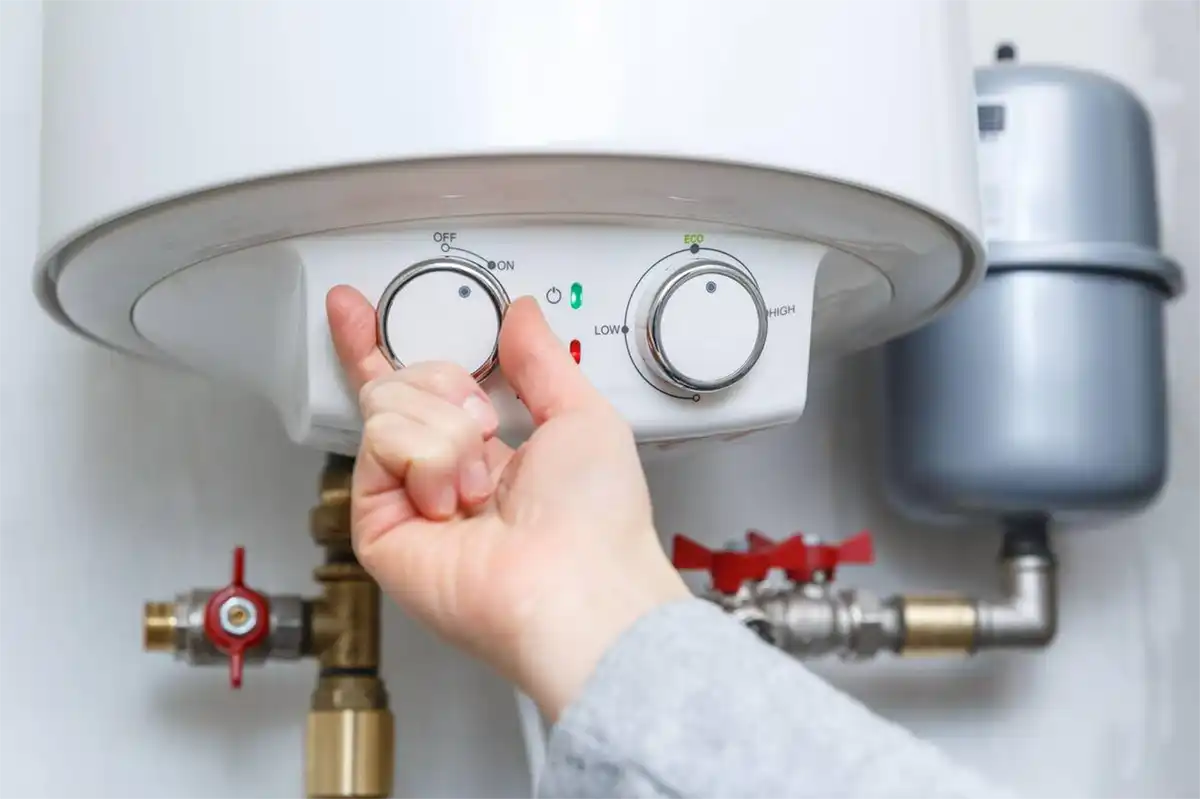Have you ever turned on the tap only to feel scalding hot water gushing out, leaving you frustrated and worried? A water heater producing excessively hot water is not just inconvenient—it’s a potential safety hazard. Understanding why this happens and how to fix it can save you from discomfort, high energy bills, and even injuries.
Here we’ll explore common reasons for overly hot water in water heaters, how to address them, and ways to prevent the issue in the future.
Common Causes of Overly Hot Water in Your Water Heater
When your water heater is heating water too much, it’s often due to one of the following causes:
1. Faulty Thermostat Settings
The thermostat on your water heater controls the temperature of the water. If it’s set too high or is malfunctioning, your water will become hotter than intended. Most thermostats are factory-set to 120°F (49°C), which is considered safe for use.
Solution:
- Check your thermostat settings and adjust them to 120°F.
- If the thermostat doesn’t respond or appears broken, it may need replacement.
2. Broken Thermostat
A damaged thermostat might inaccurately read the water temperature, causing the heater to overcompensate and heat the water excessively.
Solution:
- Test the thermostat using a multimeter to ensure it functions properly.
- If defective, replace the thermostat with a compatible one designed for your water heater model.
3. Sediment Buildup in the Tank
Over time, minerals in your water settle at the bottom of the tank, forming a layer of sediment. This can cause uneven heating and force the water heater to overheat to maintain efficiency.
Solution:
- Drain and flush your water heater tank every 6 to 12 months to remove sediment.
- Consider installing a water softener if you live in an area with hard water.
4. Malfunctioning Heating Element
Electric water heaters have heating elements that can malfunction, either overheating or running continuously, leading to extremely hot water.
Solution:
- Inspect the heating element for signs of wear or damage.
- Replace the heating element if necessary.
5. Pressure Relief Valve Issues
The temperature and pressure relief (T&P) valve is a safety mechanism designed to release excess pressure when the water gets too hot. If the valve is faulty or stuck, the water temperature may continue to rise uncontrollably.
Solution:
- Check the T&P valve for blockages or signs of malfunction.
- Replace it immediately if it fails to function correctly.
6. Incorrect Installation
Improper installation of the water heater, particularly the thermostat or heating elements, may lead to erratic temperature control.
Solution:
- Have a licensed plumber inspect your water heater’s installation.
- Correct any issues to ensure optimal performance.
How to Fix a Water Heater Producing Water That’s Too Hot
If you’re dealing with excessively hot water, follow these steps to address the issue:
1: Check the Thermostat
- Locate the thermostat on your water heater.
- Adjust the temperature setting to 120°F and wait a few hours to see if the water temperature normalizes.
2: Flush the Tank
- Turn off the water heater and let it cool.
- Connect a garden hose to the drain valve and flush the tank to remove sediment.
- Refill the tank and check if the issue persists.
3: Inspect the T&P Valve
- Test the T&P valve by lifting the lever and releasing some water.
- If it doesn’t release water or leaks, replace it immediately.
4: Call a Professional Plumber
If the problem continues despite your efforts, it’s best to call a professional plumber to diagnose and fix the issue.
Preventing Overheating in Water Heaters
Proactively maintaining your water heater can prevent future issues and extend its lifespan. Here are some tips:
- Regular Maintenance
Schedule annual inspections to identify and resolve problems before they escalate. - Flush the Tank
Remove sediment buildup by flushing your water heater at least once a year. - Monitor the Thermostat
Periodically check the thermostat settings and functionality to ensure consistent performance. - Test the T&P Valve
Test the T&P valve every 6 months to ensure it’s working correctly. - Hire a Professional
When installing or repairing a water heater, always rely on a licensed plumber to avoid improper setup.
When to Call Beeline Plumbing Experts
Beeline Plumbing experts specializes in diagnosing and resolving water heater issues efficiently. Whether it’s a faulty thermostat, sediment buildup, or installation problems, our team is equipped to handle it all.
Why Choose Beeline Plumbing?
- Experienced and certified plumbers
- Prompt and reliable service
- Affordable and transparent pricing
Contact us today at https://callbeeline.com/ to schedule a service appointment. Let us ensure your water heater works safely and efficiently!
Frequently Asked Questions (FAQ)
1. What temperature should my water heater be set at?
The recommended temperature setting is 120°F to prevent scalding and reduce energy consumption.
2. How often should I flush my water heater?
You should flush your water heater every 6 to 12 months to remove sediment and maintain efficiency.
3. Can I replace a water heater thermostat myself?
While replacing a thermostat is possible for DIY enthusiasts, it’s best to hire a professional plumber to avoid complications.
4. What are the signs of a faulty T&P valve?
A faulty T&P valve may leak, fail to release pressure, or make unusual noises.
5. How can I tell if sediment buildup is causing overheating?
If you notice uneven water temperatures, popping sounds, or reduced efficiency, sediment buildup might be the cause.



